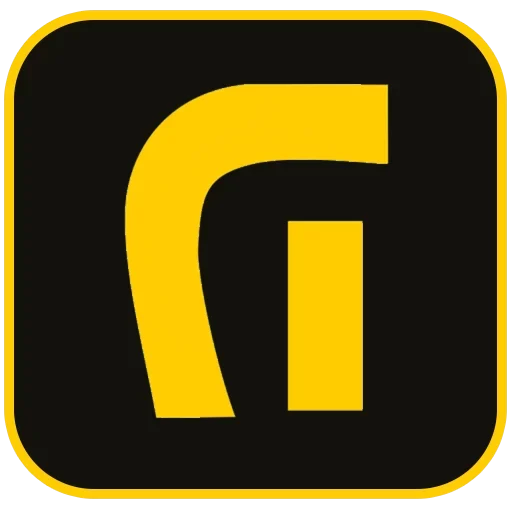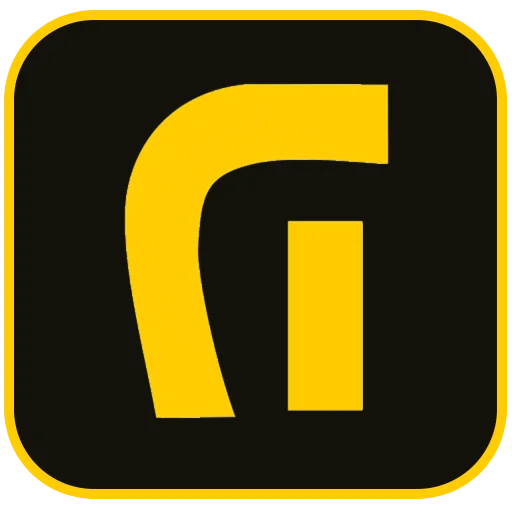Welcome to the digital world, where every online entity needs a unique address. Just like a physical business or home has a street address, your website needs its own identifiable location on the vast landscape of the internet. This address is known as a website domain, or simply a domain. At Asa rad co (آسا راد), we understand that navigating the technical aspects of establishing an online presence can feel overwhelming. That’s why we’ve put together this comprehensive guide to answer the fundamental question: What is a site domain? In the simplest terms, it’s the easy-to-remember name that users type into their web browser’s search bar to find your website, eliminating the need to remember complex numerical IP addresses. Choosing the right domain is a critical first step in building your online brand and ensuring your customers can easily find you.
Understanding the Basics: What Exactly is a Domain Name?
Think of the internet as a massive city. Every building in this city – every website, server, or online service – has a specific location. This location is identified by a unique numerical label called an IP address (Internet Protocol address). An example might look something like 192.168.1.1 or 2001:0db8:85a3:0000:0000:8a2e:0370:7334. Imagine trying to remember a string of numbers like that for every website you want to visit! It would be virtually impossible for the average user.
This is where domain names come in. A domain name is a human-readable alias for an IP address. Instead of typing 172.217.160.142 (which is one of Google’s IP addresses) into your browser, you type “google.com”. This name is much easier to remember, type, and share. The Domain Name System (DNS), often called the internet’s phonebook, translates the domain name you type into the corresponding IP address, directing your browser to the correct server where the website files are stored. Without domain names, the internet as we know it – easily navigable and user-friendly – wouldn’t exist.
Deconstructing a Domain Name: The Key Components
A typical domain name is composed of two primary parts, separated by a dot:
1. The Second-Level Domain (SLD)
This is the unique name you choose for your website. In “asaradco.com”, “asaradco” is the second-level domain. This part of the domain name is usually representative of your brand name, business name, or the topic of your website. It needs to be unique within the context of the top-level domain it’s associated with. While millions of websites exist, there can only be one “asaradco” under the “.com” extension. However, there could theoretically be “asaradco.org” or “asaradco.net”, assuming those haven’t been registered by someone else.
2. The Top-Level Domain (TLD)
This is the part of the domain name that comes after the dot, at the very end. In “asaradco.com”, “.com” is the top-level domain. TLDs are managed by the Internet Corporation for Assigned Names and Numbers (ICANN) through various domain registries. They represent different categories or purposes. Understanding the different types of TLDs is crucial for choosing the right one for your website.
Types of Top-Level Domains (TLDs)
TLDs can be broadly categorized into several types:
- Generic Top-Level Domains (gTLDs): These are the most common and widely recognized TLDs. Originally intended for specific uses, many gTLDs are now open for general registration. Examples include:
.com(commercial) – The most popular and widely recognized TLD, generally recommended for businesses and commercial websites..org(organization) – Primarily used by non-profit organizations, charities, and other non-commercial entities..net(network) – Originally for network-related organizations, now often used as an alternative to .com..info(information) – Intended for informational websites..biz(business) – Another alternative for businesses.- New gTLDs: In recent years, hundreds of new gTLDs have been released, offering more specific options like
.online,.store,.blog,.tech,.app, and even city-specific ones like.nycor industry-specific ones like.photography. These can help make a domain name more relevant and descriptive.
- Country Code Top-Level Domains (ccTLDs): These TLDs are associated with specific countries or geographic locations. They are typically two letters long, based on ISO 3166-1 alpha-2 country codes. Examples include:
.ir(Iran).uk(United Kingdom).de(Germany).jp(Japan)
ccTLDs are often used by businesses or organizations that want to target a specific country audience or indicate their geographic origin. For businesses operating primarily within Iran, a
.irdomain is a strong choice, signifying local relevance and potentially building trust with Iranian users. - Sponsored Top-Level Domains (sTLDs): These TLDs are sponsored by specific organizations that enforce rules about who can use them. Examples include:
.gov(United States government).edu(United States accredited postsecondary institutions).mil(United States military).aero(aerospace industry).coop(cooperatives).museum(museums)
These are restricted TLDs and not available for general public registration.
Understanding these categories helps you select a TLD that aligns with your website’s purpose, target audience, and geographic focus. For a commercial website with a global reach, a .com is often the ideal choice, but for a business focused specifically on the Iranian market, a .ir domain might be more suitable. Some businesses choose to register their name under multiple relevant TLDs to protect their brand.
Understanding .ir Domain Statistics
Focusing on the Iranian context, the number of active domains under the .ir ccTLD and its subdomains provides insight into the digital landscape within the country. The table below, showing statistics for active domains under various .ir suffixes, highlights the prominence of the main .ir TLD for general use, alongside more specific subdomains used by particular types of organizations in Iran.
| Suffix | Number of active domains |
| ir | 1492960 |
| co.ir | 4136 |
| ایران | 1590 |
| ac.ir | 1233 |
| id.ir | 643 |
| org.ir | 274 |
| sch.ir | 249 |
| gov.ir | 210 |
| net.ir | 27 |
| مجموع: | 1501322 |
As evident from the data, the primary .ir extension is by far the most popular, indicating its widespread adoption for personal, commercial, and general informational websites within Iran. The .co.ir subdomain is used for commercial entities, .ایران is the internationalized domain name (IDN) for Iran, .ac.ir is for academic institutions, .id.ir for individuals, .org.ir for non-profit organizations, .sch.ir for schools, .gov.ir for governmental entities, and .net.ir for network infrastructure providers. While the numbers for subdomains like .co.ir and .gov.ir are significantly lower than the main .ir, they serve important roles in categorizing specific types of online entities within the country.
More Than Just an Address: Why Your Domain Matters
Choosing the right domain name goes far beyond simply picking an address. Your domain is a foundational element of your online presence, impacting everything from your branding to your search engine visibility.
Branding and Identity
Your domain name is often the first impression users have of your brand online. A good domain name is memorable, relevant, and reflects your business or project. It becomes synonymous with your online identity. A strong, brandable domain name helps you stand out in a crowded digital marketplace and builds recognition over time. Conversely, a poorly chosen or generic domain can make your brand seem unprofessional or forgettable.
User Experience (UX)
An easy-to-remember and easy-to-type domain name directly contributes to a positive user experience. If your domain is complicated with hyphens, numbers, or unusual spellings, users may struggle to find your site or mistype the address, leading them elsewhere. A simple, clean domain name makes it effortless for customers to return to your site or recommend it to others.
Search Engine Optimization (SEO)
While the exact impact of keywords in a domain name on SEO has decreased over the years compared to content quality and backlinks, your domain name still plays a role in your search engine ranking potential:
- Brand Building: A strong, recognizable brand associated with your domain can lead to direct traffic and brand searches, which search engines like Google interpret as a sign of authority and relevance.
- Click-Through Rates (CTR): In search results, a relevant and trustworthy-looking domain name can encourage users to click on your listing over competitors.
- Anchor Text: When other websites link to yours, the domain name itself is often used as anchor text, contributing to your backlink profile.
- Local SEO: Using a ccTLD like
.ircan signal to search engines that your website is relevant to users in that specific country, potentially boosting your visibility in local search results.
While keyword-rich domains were once heavily weighted, modern SEO focuses on your domain as a brand identifier and trust signal, supported by high-quality content and a strong backlink profile.
Choosing the Perfect Domain Name: Expert Tips
Selecting the right domain name is a crucial decision. It requires careful consideration to ensure it serves your brand well and supports your online goals. Here are some expert tips to guide you, building upon foundational advice:
1. Keep it Unique and Avoid Trademark Issues
Your domain name should not infringe upon existing trademarks or be too similar to established, well-known brands. Using a name too close to a famous company can lead to legal issues, including potential lawsuits or the loss of your domain. Furthermore, search engines and users might confuse your site with the larger brand, leading to misdirected traffic or a perceived lack of originality. Always research potential names to ensure they are not trademarked and check for similarity with major brands in your industry.
2. Keep it Short and Memorable
Shorter domain names are easier to remember, type, and share verbally. Aim for a name that is concise and catchy. While brevity is ideal, don’t sacrifice clarity or relevance for shortness alone. A slightly longer, descriptive name is often better than a short, cryptic one. Test potential names by saying them out loud and writing them down to see how easily they stick.
3. Make it Easy to Pronounce and Spell
If people can’t easily say or spell your domain name, they won’t be able to find your website. Avoid using complex words, unusual spellings, or words with multiple common spellings. The easier your domain is to communicate verbally and in writing, the more likely people are to visit and share it.
4. Consider Including Keywords (Use with Nuance)
Including a relevant keyword can sometimes help users understand what your website is about at a glance. For instance, if you sell bicycles, incorporating “bicycle” or a related term might seem logical. However, avoid stuffing keywords awkwardly into your domain name. Modern SEO prioritizes brandable domains. If you can naturally include a relevant keyword that also fits your brand name, great. But prioritizing a strong, unique brand name is generally more important than forcing in a keyword. For example, “AsaradcoBicycles.ir” might work if “Asaradco” is your brand, but “BestDiscountCheapBikesOnline.com” is overly keyword-stuffed and looks spammy.
5. Avoid Hyphens and Numbers (Generally)
Using hyphens (like “my-website.com”) or numbers (like “website123.com”) makes your domain name harder to remember and communicate. When you tell someone your website address, you have to clarify “that’s ‘my’ hyphen ‘website’ dot com”. Users might forget the hyphen or number and end up on a different site. While there might be rare exceptions, it’s best practice to stick to a simple, alphanumeric name without these elements.
6. Choose the Right TLD for Your Purpose
As discussed earlier, the TLD sends a signal about your website. For a global business, .com is often the best choice due to its widespread recognition and trust. If you operate primarily in Iran, a .ir domain is highly recommended as it indicates local relevance and can resonate better with the local audience. Choose a TLD that aligns with your target audience and the nature of your website (e.g., .org for non-profits, .edu for educational institutions if eligible).
7. Check for Availability and Social Media Handles
Once you have potential domain names in mind, check if they are available for registration. You should also check if the corresponding social media handles (like @yourbrand on Instagram, Twitter, etc.) are available. Consistency across your domain name and social media handles strengthens your brand identity and makes it easier for people to find you across different platforms.
Understanding Domain Registration: How to Get Your Address Online
Once you’ve chosen the perfect domain name, the next step is to register it. Domain names are not bought outright; they are leased for a specific period (typically 1 to 10 years) from a domain registrar.
What is a Domain Registrar?
A domain registrar is a company accredited by ICANN or a national authority (like IRNIC for .ir domains in Iran) to register and manage domain names. They are the intermediaries between you and the domain registry.
The Registration Process
The process is relatively straightforward:
- Choose a Registrar: Select a reputable domain registrar. Factors to consider include pricing, ease of use of their platform, customer support, and additional services offered (like domain privacy or email hosting).
- Search for Your Domain: Use the registrar’s search tool to check if your desired domain name (including the TLD) is available. If it’s taken, the registrar will often suggest alternatives.
- Select Registration Period: Choose how many years you want to register the domain for. Longer registration periods can sometimes offer a slight discount and ensure you don’t accidentally lose your domain due to forgetting to renew.
- Provide Contact Information: You’ll need to provide accurate contact information (name, address, email, phone) as required by ICANN or the respective registry. This information is publicly available in the WHOIS database unless you use a privacy service.
- Complete Payment: Pay the registration fee.
- Verify Email: You will likely receive an email requiring you to verify your email address. It’s crucial to complete this step to avoid your domain being suspended.
Domain Privacy
Since your contact information is typically public in the WHOIS database, many registrars offer a domain privacy service. This service replaces your contact information in the public database with the registrar’s information, helping to protect you from spam and unwanted solicitations. For businesses, this might be less critical as business contact information is often public anyway, but for individuals or smaller operations, it can be valuable.
Domain Renewal
Remember that domain registration is a lease, not a purchase in perpetuity. You must renew your domain registration before it expires to maintain ownership. Registrars typically send multiple reminders as the expiration date approaches. Failing to renew on time can result in your domain becoming available for others to register, leading to the loss of your website address and potentially your online presence.
Domain vs. Hosting: Clarifying the Distinction
A common point of confusion for newcomers is the difference between a domain name and web hosting. While they are related and both essential for a live website, they are distinct services.
- Domain Name: This is your website’s address – the name people use to find you (e.g.,
asaradco.com). - Web Hosting: This is the space on a server where your website’s files (HTML pages, images, videos, databases, etc.) are stored. Think of it as the land or the physical building where your online store or office is located.
You need both a domain name (the address) and web hosting (the storage space) for your website to be accessible on the internet. The domain name points browsers to the server where your hosting account is located, allowing visitors to see your website files.
Sometimes, companies offer both domain registration and hosting services, which can simplify management, but you can also register your domain with one company and host your website with another. If you use different providers, you’ll need to update the domain’s DNS settings (specifically the nameservers) at your domain registrar to point to your web host’s servers.
Exploring Different Domain Scenarios: Commercial, Free, and More
Domain names serve diverse purposes, leading to different usage scenarios:
Commercial Website Domains
For businesses, selecting the right domain name and TLD is paramount. While .com is the global standard for commercial websites due to its recognition and trust, many other options are viable depending on the target market and brand. For a business focused on Iran, .ir or .co.ir are strong choices. Newer gTLDs like .store, .shop, .online, or industry-specific extensions can also be considered if they align perfectly with the brand and availability allows. The key is to choose a name and TLD that are professional, memorable, and resonate with your potential customers.
Free Domains
Free domain names are sometimes offered as part of free web hosting packages or for educational purposes. These are often subdomains (e.g., yoursite.freewebhost.com) rather than a top-level domain you fully own and control. As mentioned in the original content, platforms like 000Webhost historically offered free hosting and subdomains, suitable for students or individuals learning web development or needing a temporary site for projects and assignments.
While appealing for cost savings, free domains come with significant limitations: they look less professional, offer limited branding opportunities, may lack features, can have reliability issues, and you don’t truly own the name. They are generally not recommended for serious businesses or long-term projects aiming to build a credible online presence. Investing in a paid domain name is a small but essential cost for establishing a professional website.
Internationalized Domain Names (IDNs)
IDNs allow domain names to be registered using characters from local scripts, such as Arabic, Chinese, or Cyrillic, rather than being limited to the standard Latin alphabet (ASCII). The .ایران TLD mentioned in the statistics table is an example of an IDN ccTLD for Iran, allowing domain names to be registered using Persian characters. This is important for global internet inclusivity and allows businesses to use domain names that match their brand name in the local language.
How Domains Actually Work: A Glimpse into the DNS
When you type a domain name into your browser, a complex process happens behind the scenes thanks to the Domain Name System (DNS). Here’s a simplified look:
- You type “asaradco.com” into your browser.
- Your computer (or router) checks its local cache to see if it already knows the IP address for “asaradco.com”.
- If not found locally, the query is sent to a recursive DNS server (often provided by your internet service provider).
- The recursive server doesn’t know the IP either, so it asks a root nameserver.
- The root nameserver doesn’t know the specific IP but directs the query to the TLD nameserver responsible for
.comdomains. - The
.comTLD nameserver directs the query to the authoritative nameserver for “asaradco.com”. These are the nameservers set up when you registered the domain and pointed it to your web host. - The authoritative nameserver knows the specific IP address for “asaradco.com” and sends it back to the recursive server.
- The recursive server sends the IP address back to your browser.
- Your browser can now connect directly to the server hosting the “asaradco.com” website using its IP address.
This entire process happens in milliseconds, allowing you to access websites seamlessly by using easy-to-remember domain names instead of numbers.
Conclusion: Your Domain, Your Digital Foundation
In essence, a website domain is your unique address on the internet, the key that unlocks your online presence for users worldwide. It’s the cornerstone of your brand identity, crucial for user experience, and a contributing factor to your SEO success. Understanding the structure of domain names, the different types of TLDs available (including country-specific ones like .ir), and the importance of choosing a name that is memorable, relevant, and professional are vital steps in establishing your place in the digital world. While free options exist for learning, investing in a proper domain name is fundamental for any serious personal project or business. As Asa rad co, we emphasize that choosing your domain name wisely is the first significant step towards building a robust and accessible online foundation.
Sources:







